
A BRIEF HISTORY OF THE CENTERVILLE AND SOUTHWESTERN RAILROAD
From idea to reality
The Centerville and Southwestern Railroad (a.k.a.The Becker Farm Railroad) is a 2 inch scale (9 and 7/16th inch gauge) railroad created and built by Henry Eugene Becker (Gene) on the Becker Dairy Farm in Roseland NJ. Construction of the railroad began in 1938 after 5 years of planning. Initially built as a point to point railroad, it weaved its way across the Becker farm passing fields with livestock, orchards, crops and a creek. For the first 10 years the railroad was not open to the general public.
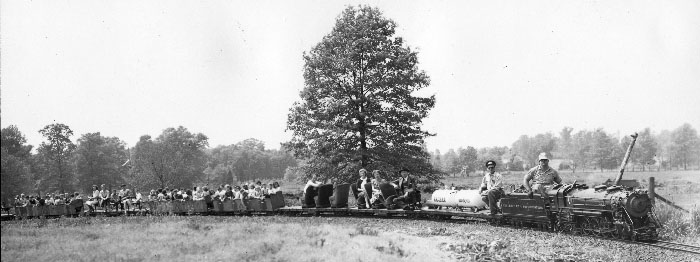
In 1950 a loop track was completed allowing the train to return to the station without having to run the engine through a Wye to reverse direction. Upon returning to the station the engines (except for the 1502 which had controls at both ends of the engine) would be put on a turntable and turned for the outbound trip.
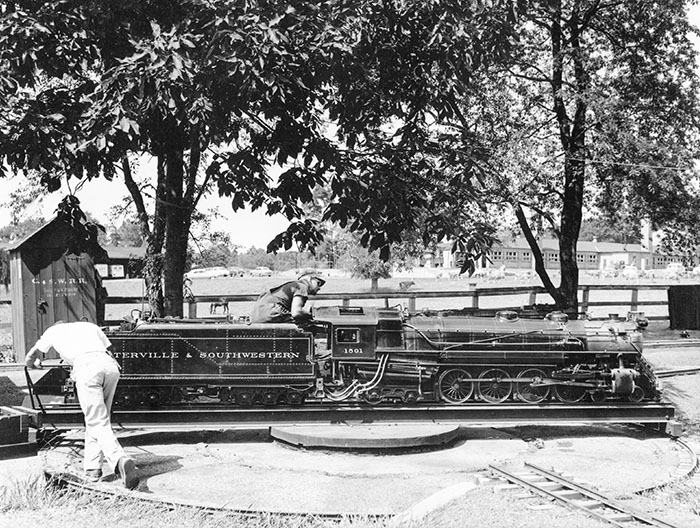
Motive power
Four engines were built for the railroad starting with the diminutive 1500, the engine that helped build the railroad. The 1500 was rebuilt multiple times (twice as a battery powered electric) during its time on the railroad.
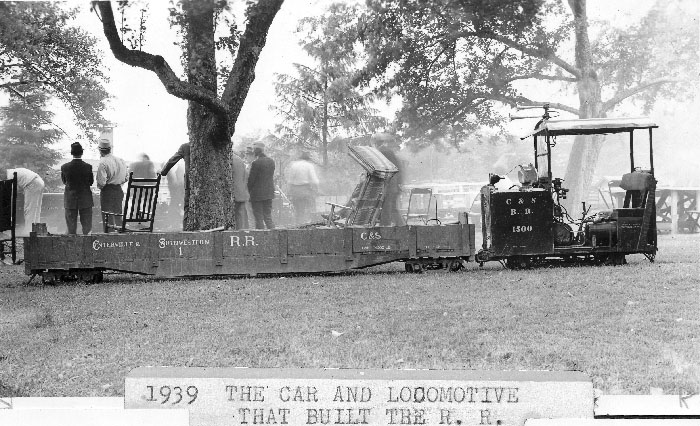
The crown jewel of the railroad was the 1501, a live steamer based on Lackawanna Railroad's #1501 "Pocono" type passenger/fast freight locomotive. Becker originally contacted Joseph B Ennis (center in picture below), a vice president of engineering at Alco who advised him their company could not build such a small locomotive. He suggested Becker contact Mr. H.B. Ayers, retired President at the H.K.Porter Locomotive company . Gene wrote, It took quite some convincing to get Mr. Ayers interested, but once he took on the project (building 1501) "all the king's horses" could not tear him away. The 1501 and the 1502 were built in the shop of Hobart B Ayers in Bridgeport Connecticut with Mr. Ennis acting as a consultant for the 1501.
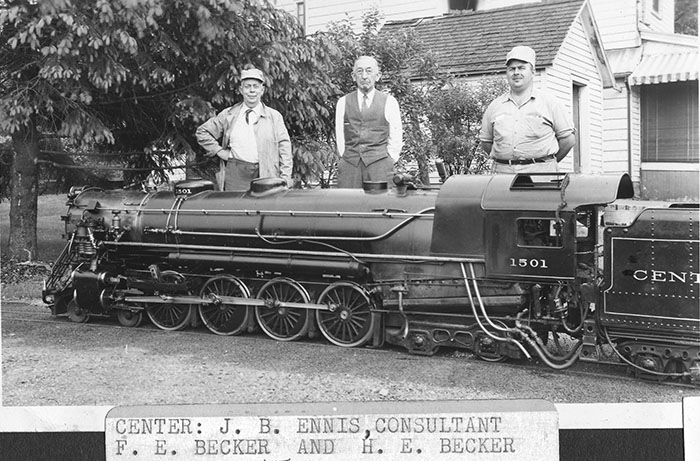
In 1964 the boiler on the 1501 went bad and had to be replaced. The engine was out of service during this period.
The third engine, the 1502, was originally built as a center cab engine. In 1949 it was rebuilt with the engine and transmission in the center and a cab at each end. This eliminated the need to turn it when it returned to the station.
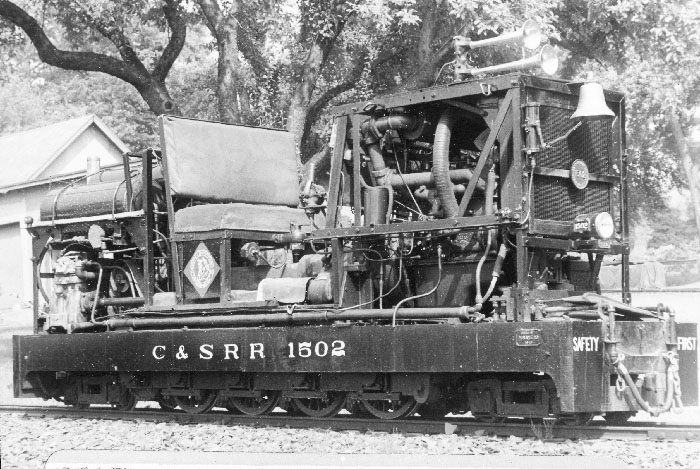
The last engine built was the 1503. Modeled after an Alco FA, it was designed and built by Gene Becker in the C&S shops on the farm in Roseland, NJ.

Rolling stock
Multiple cars for passengers and maintenance-of-way were either built on the farm or vended out. Passenger cars were initially flat cars with parlor car seats or war surplus gun mount seats.
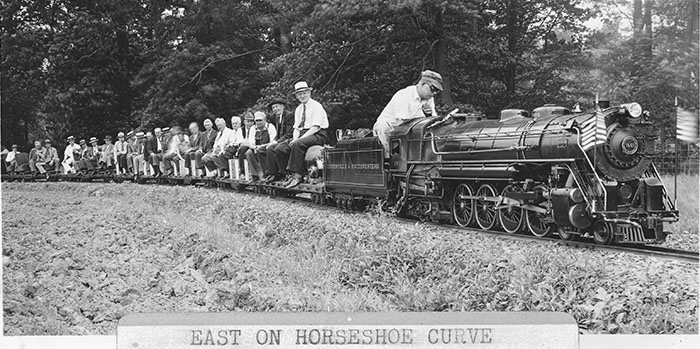
Later cars were built with sides, bench seating and doors for safety. The workers referred to them as school cars.
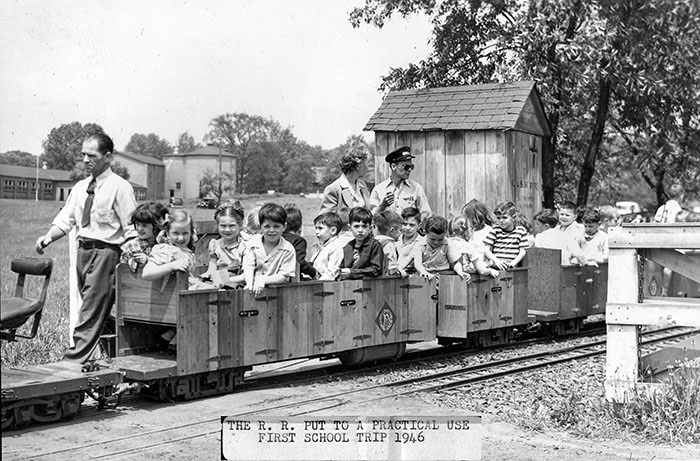
At the beginning of World War II the rail cars and engines were put in storage to conserve fuel for the war effort. In 1946 the railroad resumed operations and started hosting school field trips.
1948 - "THE FRESH MILK LINE" opens to the public
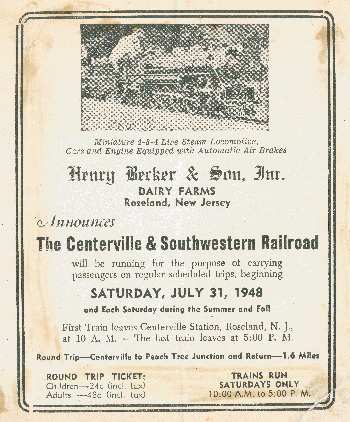
In 1948 Gene decided to open the railroad to the general public. Gene ran his railroad like a prototype railroad with emphasis placed on safety and keeping the schedule. The railroad had electric automatic track-side signals for train control and crossing flashers at grade crossings to warn pedestrians of approaching trains. It operated 1 mile of track which looped back on itself yielding a 2 mile ride. When it first opened to the public it ran on Saturdays in the summer and fall. In 1949 the schedule was expanded. The railroad operated on Saturdays from May to October, Memorial Day, Fourth of July and Labor Day. At a later point in time Wednesdays were also added to the schedule during July and August.
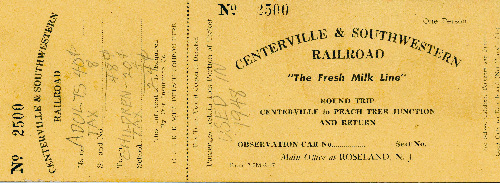
In 1948 a ticket cost 20 cents for children and 40 cents for adults (plus tax). When service ended in 1972 the price of a ticket was only 25 cents for children and 50 cents for adults. Of course no visit to the farm would be complete without stopping at the dairy store for cold chocolate milk and some farm grown vegetables when in season. The picture below shows a train traversing the aptly named "Pig Pen Hill."
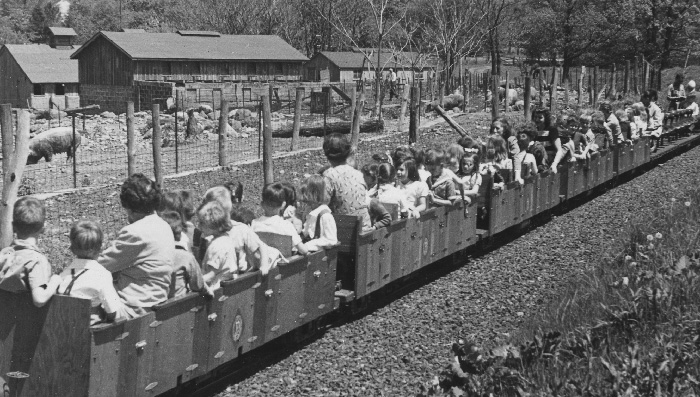
Demise of the dairy farm and the railroad
In 1968 the Becker family was notified that New Jersey DOT intended to condemn part of the farm to build Interstate 280. This loss of property necessitated re-aligning the C&S right of way. A new loop track was built which crossed the Foulerton Brook on a high bridge.
In 1972 the town of Roseland re-assessed the land from farm to commercial. The additional land taxes made it impossible for the farm to stay in business thus forcing the Beckers to cease operations and sell the land.
Becker donates the railroad
Steam engine 1501 was donated to the Henry Ford Museum in Dearborn Michigan where it was put on display. Ten years later museum management decided it wasn't in keeping with the main thrust of the museum and it was sold. As of this writing in 2019 it is in private hands. The picture below shows the 1501 being loaded into the truck that moved it from the Becker Farm to the Henry Ford Museum.
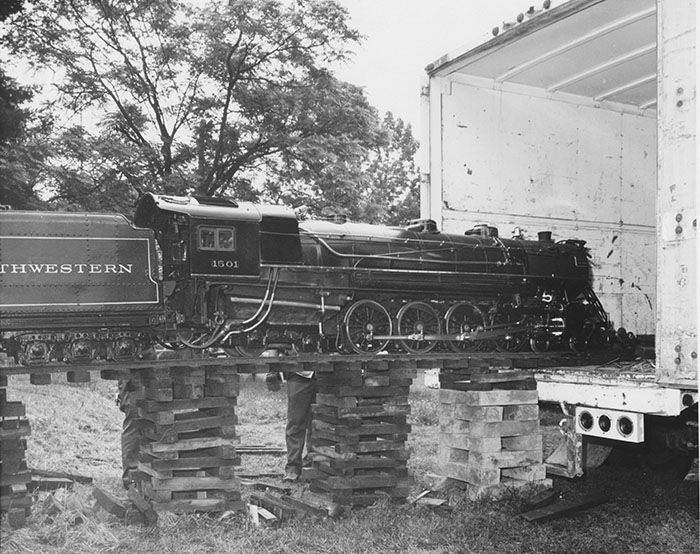
The Centerville and Southwestern track panels, signals, 2 engines and 31 pieces of rolling stock were donated and moved to Monmouth County with the stipulation that it was not to be sold into private hands. Gene later backed off that stipulation after it was apparent Monmouth was not going to operate the railroad. It sat in storage, unused, for 20 years.
All the above pictures were from the Becker's personal photo album.
New owner - New operator
In the early 1990's PRRH co-founder and first president Pete Terp became aware that Monmouth County was looking for someone to take the railroad off their hands. Pete spoke with the Phillipsburg Council and Mayor telling them if the city would take ownership of the railroad the Phillipsburg Railroad Historians would transport it to Phillipsburg and operate it at no charge to the city. They agreed and in 1992 it was moved to Phillipsburg. In 1997 The Phillipsburg Railroad Historians had their first open house and operated the C&S over a short section of track.
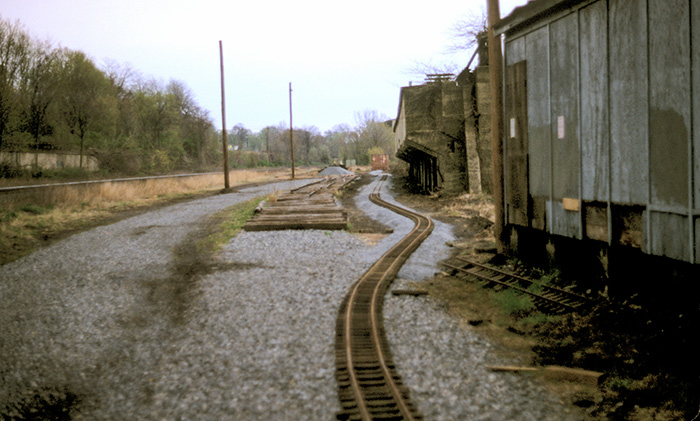
Since that humble beginning the track alignment has been changed and has grown to over 1700 feet in length. We operate the C&S several times a year. Check our OPEN HOUSE DATES for our operating schedule.
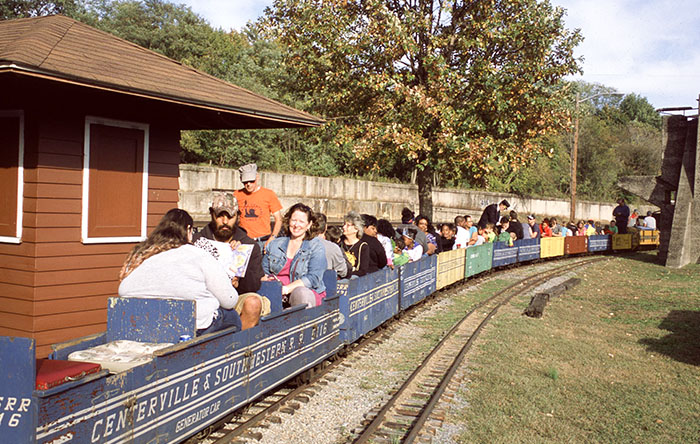
Looking forward
Our current plan is to extend the Centerville and Southwestern to the Delaware River which will more than double its current length. To accomplish this we will need permission to lay track on NJ Transit property under the S. Main Street "Black Bridge" next to the Norfolk Southern Lehigh Line. This proposal has been submitted to NJT and we are awaiting approval.
The MUST HAVE DVD for all Centerville and Southwestern enthusiasts!

BECKERS TRAIN chronicles the construction and operation of the Centerville and Southwestern Railroad on the Becker Dairy farm in Roseland NJ. Many vintage still pictures and home movies are utilized plus interviews with former fans, employees and Henry Becker himself while he was visiting the new C&S home in Phillipsburg.
This DVD is available in our gift shop
for $19.95 or may be ordered by clicking here.
Other information available on the web:
For more history about the Centerville and Southwestern check out this page on wikipedia.
For an in depth description written by Henry (Gene) Becker about the technical aspects of the railroad click here.
For several videos featuring the C&S visit our YouTube links page here.
PRRH member Tom Rose has set up a Facebook page for fans of the C&S to exchange stories and pictures or to ask or answer questions. Click here to be directed to that page.
Tom Rose also has a C&S digital archive page that he maintains.
Click here to view the archive.